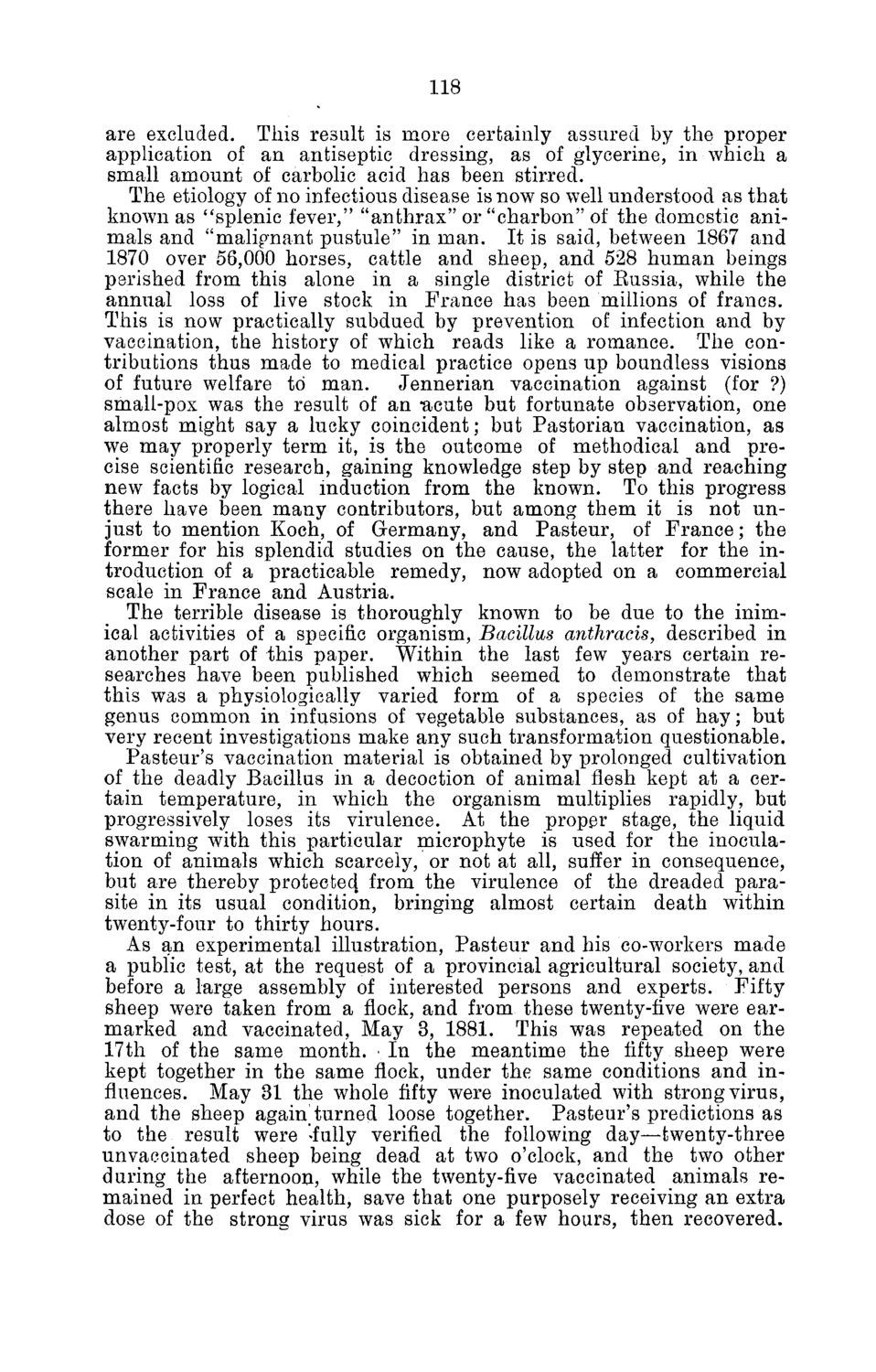| |
| |
Caption: Board of Trustees Minutes - 1882
This is a reduced-resolution page image for fast online browsing.

EXTRACTED TEXT FROM PAGE:
118 are excluded. This result is more certainly assured by the proper application of an antiseptic dressing, as of glycerine, in which a small amount of carbolic acid has been stirred. The etiology of no infectious disease is now so well understood as that known as "splenic fever," "anthrax" or "charbon" of the domestic animals and "malignant pustule" in man. It is said, between 1867 and 1870 over 56,000 horses, cattle and sheep, and 528 human beings perished from this alone in a single district of Eussia, while the annual loss of live stock in France has been millions of francs. This is now practically subdued by prevention of infection and by vaccination, the history of which reads like a romance. The contributions thus made to medical practice opens up boundless visions of future welfare to man. Jennerian vaccination against (for ?) small-pox was the result of an -acute but fortunate observation, one almost might say a lucky coincident; but Pastorian vaccination, as we may properly term it, is the outcome of methodical and precise scientific research, gaining knowledge step by step and reaching new facts by logical induction from the known. To this progress there have been many contributors, but among them it is not unjust to mention Koch, of Germany, and Pasteur, of France; the former for his splendid studies on the cause, the latter for the introduction of a practicable remedy, now adopted on a commercial scale in France and Austria. The terrible disease is thoroughly known to be due to the inimical activities of a specific organism, Bacillus anthracis, described in another part of this paper. Within the last few years certain researches have been published which seemed to demonstrate that this was a physiologically varied form of a species of the same genus common in infusions of vegetable substances, as of hay; but very recent investigations make any such transformation questionable. Pasteur's vaccination material is obtained by prolonged cultivation of the deadly Bacillus in a decoction of animal flesh kept at a certain temperature, in which the organism multiplies rapidly, but progressively loses its virulence. At the proper stage, the liquid swarming with this particular microphyte is used for the inoculation of animals which scarcely, or not at all, suffer in consequence, but are thereby protected from the virulence of the dreaded parasite in its usual condition, bringing almost certain death within twenty-four to thirty hours. As an experimental illustration, Pasteur and his co-workers made a public test, at the request of a provincial agricultural society, and before a large assembly of interested persons and experts. Fifty sheep were taken from a flock, and from these twenty-five were earmarked and vaccinated, May 3, 1881. This was repeated on the 17th of the same month. In the meantime the fifty sheep were kept together in the same flock, under the same conditions and influences. May 31 the whole fifty were inoculated with strong virus, and the sheep again turned loose together. Pasteur's predictions as to the result were *fully verified the following day—twenty-three unvaecinated sheep being dead at two o'clock, and the two other during the afternoon, while the twenty-five vaccinated animals remained in perfect health, save that one purposely receiving an extra dose of the strong virus was sick for a few hours, then recovered.
| |